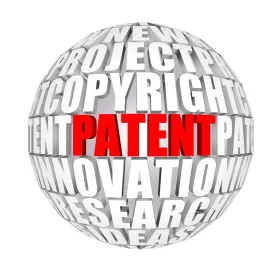On June 7, 2018, the USPTO issued a memorandum to the Examining Corps providing patent eligibility examination guidance based on the recent Federal Circuit decision in Vanda Pharmaceuticals Inc. v. West-Ward Pharmaceuticals. The Vanda memo emphasizes that method of treatment claims can be found to satisfy 35 USC § 101 at the first step of an Alice/Mayo analysis, without requiring a showing of “nonroutine or unconventional steps.”
The Vanda Memo
The Vanda memo emphasizes that the Federal Circuit found the claims at issue in Vanda(discussed in this article) to be patent eligible because they were not directed to a judicial exception. The memo cites the court’s explanation that while the invention may have stemmed from recognition of naturally-occurring “relationships between iloperidone, CYP2D6 metabolism, and QTc prolongation,” the inventors did not claim the relationships, but rather claimed “an application of that relationship.” The memo notes that the court held the claims “patent eligible under the first step of the Alice/Mayo framework (Step 2A in the USPTO’s subject matter eligibility guidance), because the claims ‘are directed to a method of using iloperidone to treat schizophrenia,’ rather than being ‘directed to’ a judicial exception.”
The memo makes three specific points based on the Vanda decision:
- Claims should be evaluated as a whole, including arguably conventional steps, when determining whether they are “directed to” a judicial exception.
- Despite the “administering” step, the claims invalidated in Mayo were not method of treatment claims that practically applied a natural relationship; thus, Mayo does not undermine the eligibility of method of treatment claims.
- When determining whether claims are directed to a judicial exception, there is no need to consider whether the recited steps are “routine or conventional,” and if the claims are not directed to a judicial exception, there is no need to undertake such an analysis.
Patent Eligibility Of Personalized Methods Of Treatment
The Vanda memo provides welcome guidance to examiners that emphasizes the patent eligibility of personalized method of treatment claims. Although the memo states that existing USPTO patent eligibility guidance already supports finding method of treatment claims eligible, we have seen examiners reject such claims based on Mayo and assertions that the claims at issue were method of treatment claims in view of the “administering” step. Hopefully this guidance will put an end to such rejections and provide a path forward for personalized method of treatment claims. On the other hand, this memo casts further doubt on the eligibility of diagnostic claims, when it characterizes the ineligible claims at issue in Mayo as having an “overall diagnostic focus.”




 />i
/>i
